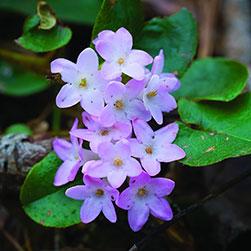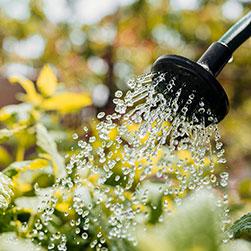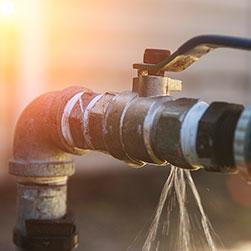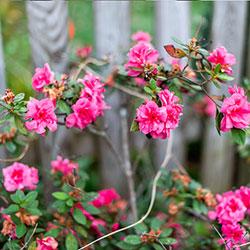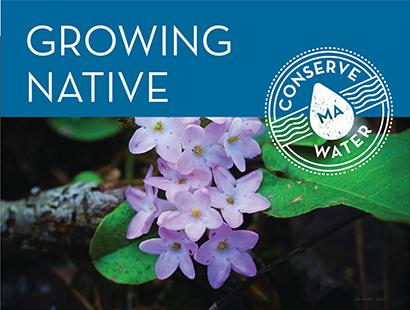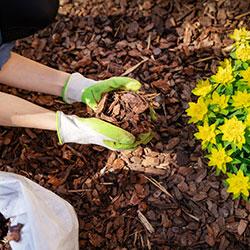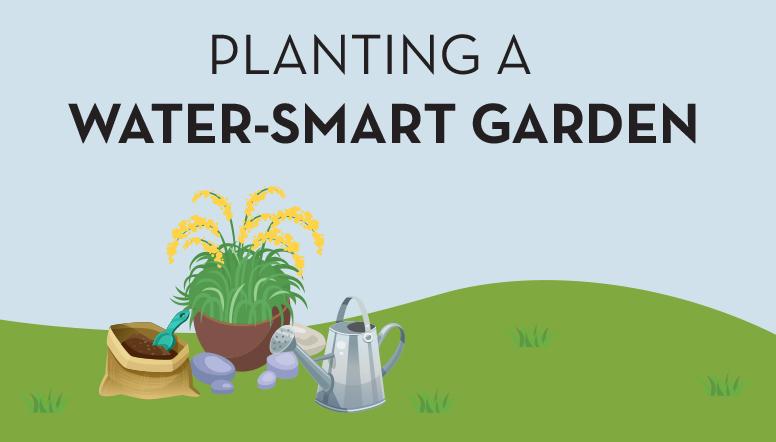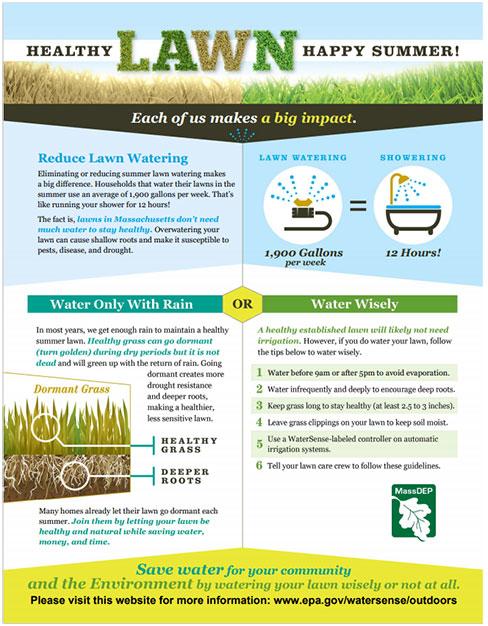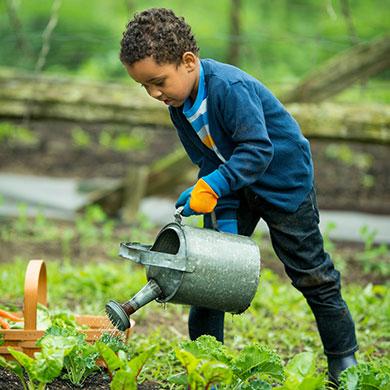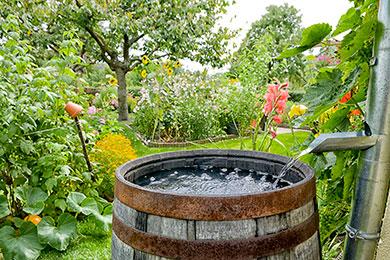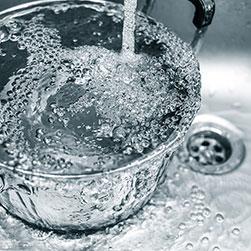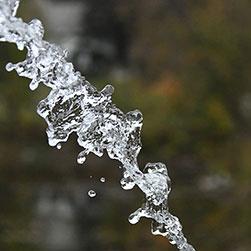In most years, Massachusetts gets enough rainfall to keep lawns healthy with no watering needed! When lawns turn a golden brown during the summer, they are dormant, not dead. It’s Nature’s way of protecting them from a dry spell. They green up again when rain returns.
- This page, Outdoor Water Conservation, is offered by
- Water Resources Commission
Table of Contents
Simple steps to conserve water outdoors
Plant a water smart yard
A water-smart yard starts with good soil that holds moisture and allows deep root growth. Dig down about 8 inches and grab a handful of soil. It should feel crumbly but not too dry and not too sticky. It should ball up but still have porous spaces for air and water to move through. A rich, earthy smell indicates it’s teeming with nourishing micro-organisms and organic matter.
To learn how well your soil drains, dig a hole about the size of a 1-gallon container (on a nice day and not immediately after a heavy rain). Fill the hole with water, let it drain and then fill it again. Ideally, it should drain within 3-4 hours. Break up compacted soil. This will allow air, moisture, and nutrients to reach a plant’s roots.
You might also want to check your soil for nutrients, pH, and other factors. You can send a soil sample to a local agricultural cooperative or the University of Massachusetts soil testing laboratory. You can also send a soil sample to this UMass lab if youare concerned that your soil may have high levels of lead.
If your soil is either too wet or doesn’t drain well, amend it by digging in sand (if it has too much clay), organic matter and/or compost. A good soil mix is 50-60% sand, 20-30% top soil and 20-30% organic matter.
Less turf means less watering.
Turf grass (a.k.a. lawns) requires the highest percentage of water in most landscapes. Plant turf grass only where it has a practical function, for example, as a play space. If you have more lawn area than you need, consider reducing it and planting flowers, shrubs, and rock or sculpture gardens instead. Learn the basics for how to plant a less water-needy lawn at Greenscapes.org
Choose native plants and turf that need less water; Once established, plants native to Massachusetts and our climate require little water beyond normal rainfall. Of course, plants native to The Cape vary widely from those native to the Berkshires. When designing landscapes that are well-suited to a particular locale, it’s helpful to know the naturally occurring plant communities that will thrive in your specific soil, moisture, and climate conditions.
- Use the Native Plant Trust Plant Finder to quickly search for the native plants and shrubs that grow best where you live.
- Find native plant gardening tips and inspiration atGrow Native Massachusetts.
- Enter your zip code into the Audubon native plant search tool to discover which native plants will attract birds to your garden and yard.
- Enter your zip code into the National Wildlife Federation tool to find the best native plants for supporting wildlife.
Grass height; Maintain your turf grass height at 2.5 to 3 inches. This will help shade your soil so it retains more moisture. Taller grass also grows deeper roots that help to maintain soil health during dry spells.
Use mulch; Mulching around shrubs and garden plants helps reduce water loss, inhibits weed growth, moderates soil temperature, and prevents erosion. Leaving lawn clippings on the grass will also help soil retain moisture while recycling their nutrients.
Water Wisely
Avoid Evaporation: Water before 9am or after 5pm while the sun is less strong.
Water less frequently but deeply: Your soil will stay moist longer and the water will get down to the roots of your lawn; spurring deeper root growth and a healthier, more drought-tolerant lawn.
Have an irrigation system? Use a WaterSense-labelled controller to water only when plants need it. And be sure not to water the driveway or paved areas.
Comply with seasonal water restrictions
Many Massachusetts towns implement restrictions in the spring and maintain them through the dry summer months to ensure there is enough clean water when needed. Typical measures include limiting the days, or hours per day and time of day, for operating automatic sprinklers; and requiring hand-watering only of gardens. Visit your town or city’s website to review your local water conservation regulations and activities.
For other smart lawn watering practices, check out Greenscapes’ lawn watering tips.
Install a rain barrel
Rain barrels store rain water that runs off your roof. You can use this “free” water when your plants are thirsty. Rain barrels are not expensive and are relatively easy to install.
Many Massachusetts communities and watershed organizations offer discounts or rebates for purchasing rain barrels. Check with your local water department or watershed organization.
Rain barrel resources: The pros at This Old House show you how to connect a rain barrel. You can also learn more about why and how to use them here.
Additional Outdoor Water Conservation Tips
Do you have a pool? If so, cover it when you’re not using it to minimize evaporation and the need to add water.
Wash vehicles with a bucket and sponge, using a hose with a shut-off nozzle for rinse only. Better yet, go to a commercial car wash that recycles water (most do).
Use a broom instead of a hose or power washer to clean walkways and patios.
Key Resources:
Outdoor Water Conservation, Massachusetts Water Conservation Standards
Tips for Saving Water
More Than Just A Yard: Ecological Landscaping Tools
AWE’s Home Water Works irrigation
Acton Water Wise Garden
Greenscapes.org
Water-Smart Landscapes Start with WaterSense (EPA WaterSense/outdoors)
Water-Wise Landscaping & Watering Guide (from WaterUseItWisely).
